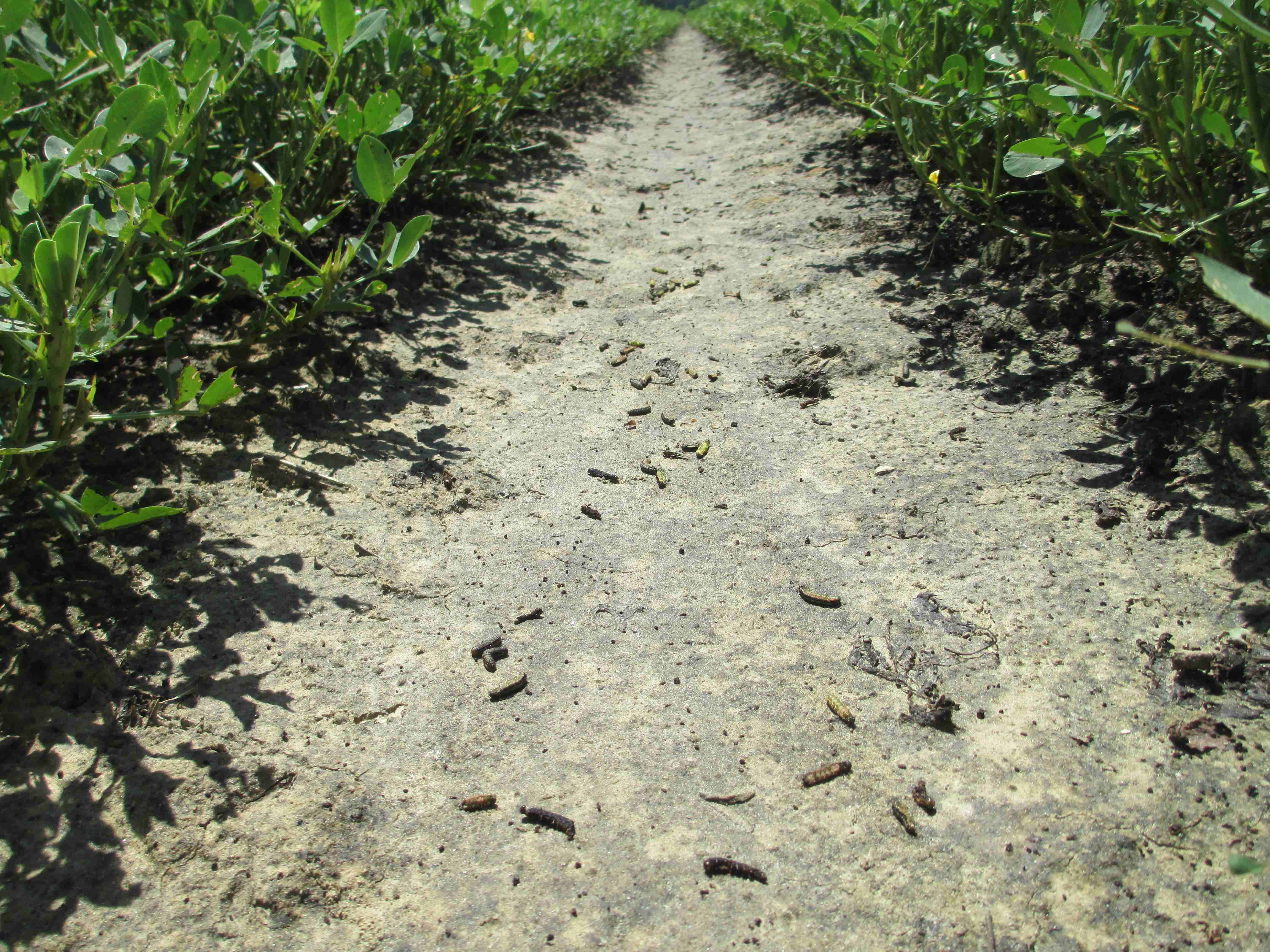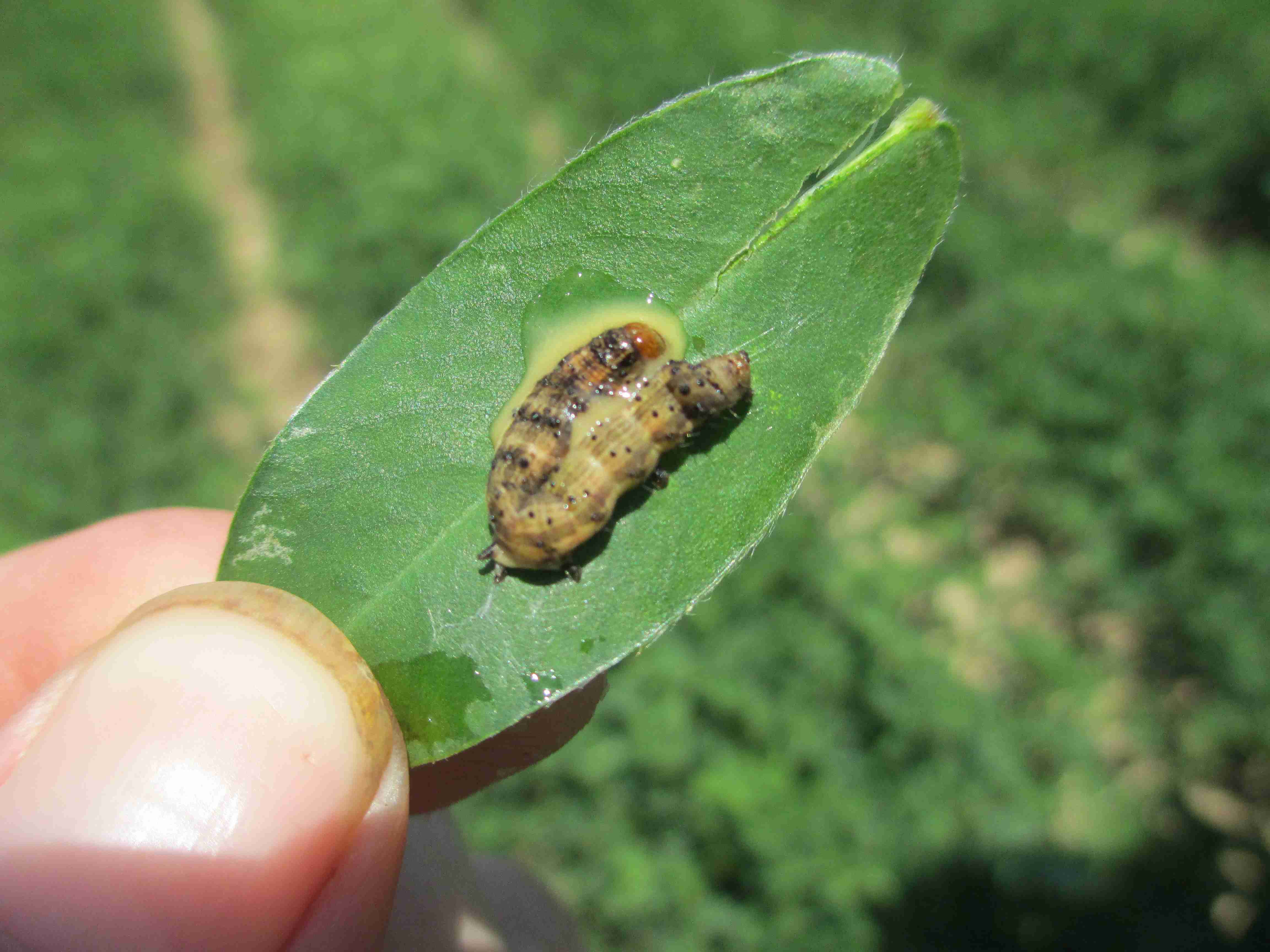
Mark Mauldin, Washington County agent finding beet armyworms and soybean loopers. Photo: Josh Thompson
It’s been a busy week for insect pests, especially caterpillars. It seems that every square mile in Jackson and surrounding counties has armyworms in it right now; including pastures, hayfields, peanuts, soybeans, lawns and anywhere in between. In addition to armyworms we’ve been finding a few loopers, corn earworms, stink bugs moving into cotton, and spider mites in peanuts and cotton.
So far it looks like pyrethroids are giving good control of fall and beet armyworms, as long as they are less than an inch long. Some of the larger seem to be able to escape control, however. Insect Growth Regulators (IGRs) such as Dimilin have also been showing good results as long as they are applied while the caterpillars are small.
The picture below shows the results of peanut field recently sprayed with a pyrethroid. These armyworms were above the threshold level of 3-4 caterpillars per foot and the treatment provided a quick knock-down.
Below is a picture of what a caterpillar that has been affected by Dimilin looks like. Dimilin is a juvenile growth inhibitor that inhibits chitin synthesis, causing an insect’s cuticle to rupture as shown below. The positive to IGR’s is that they don’t have much effect on beneficial insects, however, they do take longer to control the target insects because of the way they work within the pest.
Below is Jordan Toombs with Helena Chemical Company identifying the beginnings of a spider mite infestation in peanuts. There were 4-5 areas within the field with damage like this.
For more information, see Peanut Insect Control, Cotton Insect Control, or Soybean Insect Control or contact your local UF/IFAS Extension Agent.
- Carinata Starting to Come Up in Jackson County - December 12, 2014
- Wheat Production Considerations for 2014-2015 - November 10, 2014
- Peanut and Cotton Harvest Video 2014 - November 10, 2014




